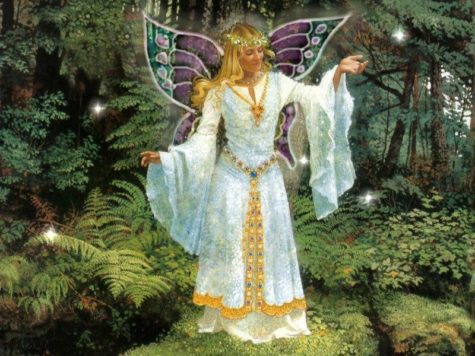Daily Archives: June 22, 2017
The Fête de la Saint-Jean-Baptiste, held annually on June 24, is the feast day of St John the Baptist, a Jewish preacher who according to the Christian tradition, baptized Jesus in the River Jordan. It is a day of celebration in Quebec and other areas of French Canada. The feast day of Saint John the Baptist or Midsummer was a very popular event in the Ancien Régime of France, and it is still celebrated as a religious feast day in several countries, like Denmark, Norway, Sweden, Finland, Estonia, Spain, Latvia and Lithuania.
Other names for this holiday include the following:
- Saint Jean Baptiste Day
- La Saint-Jean
- St John the Baptist Day
- Fête nationale du Québec
- Quebec’s National Holiday
This is a historical, cultural, national and religious holiday. It is observed by Quebecers, French Canadians, French Americans. Celebrations include parades, bonfires, fireworks, feasting, drinking, musical concerts, flag waving, patriotic speeches, and contests.
Symbols
The flag of Quebec and the fleurs-de-lis are widespread symbols of Saint Jean Baptiste Day. Many people choose to wear blue or white clothing to the celebrations. The fleurs-de-lis represents the flower of an iris or a lily. The fleurs-de-lis is also associated with the Virgin Mary and her purity. It was a symbol of French speaking people and their kings after King Clovis I converted to Christianity in the year 493. It was taken from the papal seal or coat-of-arms when the king converted, to symbolize the strength and significance of the French nation in its union with the Papal state. Quebec’s flag is one-and-a half times as wide as it is high and has a blue background. The background is divided into four rectangles by a cross and each of the four rectangles contains a single white fleurs-de-lis.
What Do People Do?
Various events are organized on Saint Jean Baptiste Day. These range from large scale public celebrations, such as rock and jazz concerts, sports tournaments, parades and firework displays, to small family or neighborhood happenings, such as yard sales, picnics, barbecues, bonfires and children’s entertainment. Many church bells ring in celebration and public dances and fun fairs are held. Some events may be held on the evening of June 23 and many are broadcast live on television, radio or on the Internet. The celebrations are coordinated by the Mouvement national des Québécoises et des Québécois.
Public Life
Saint Jean Baptiste Day is a public holiday in the Canadian province of Quebec. Post offices and many stores are closed. Public transport services run to a reduced schedule in some places or may not run at all in other areas, such as the province’s rural regions. If June 24 falls on a Sunday, the same day is a paid day off for those who work on Sunday. June 25 becomes a paid day off for workers who do not ordinarily work on Sunday.
Background
In ancient times, the summer solstice was honored around June 21. Midsummer festivals, such as those linked with the June solstice, were held in Europe for thousands of years. In the fifth century, Christianity spread through France. When people converted to Christianity, elements of these festivals were combined with feast days for Christian saints. June 24 – the feast day of St John was substituted for the pagan Midsummer celebrations. Traditionally, bonfires would be lit on the eve of June 24 in order to honor the saint.
In France, the celebrations around the feast day of Saint John the Baptist were widely enjoyed and French colonists introduced these traditions to North America.
The patriotic tone of the Saint Jean Baptiste Day celebrations began in 1834. In that year Ludger Duvernay, an influential journalist, visited the St Patrick’s Day celebrations in Montreal, and was inspired to create a similar event for French Canadians. In 1843, he established the Saint Jean Baptiste Society to promote the celebration of Saint Jean Baptiste Day. This organization was supported by the Catholic Church, which saw it as a way to promote social and moral progress. In 1908 St John the Baptist was designated as the patron Saint of Quebec, re-enforcing the connection between Saint Jean Baptiste Day and French-Canadian patriotism.
The celebrations were supported by the Catholic Church and were primarily religious around that time. The lighting of bonfires, a traditional custom on the Nativity of Saint John which ultimately reached back to pre-Christian Midsummer celebrations were still lit at night. In addition, the first Saint-Jean-Baptiste parades were organized. They became an important tradition over time. The procession of allegorical floats was introduced in 1874.
During and after World War I, Saint Jean Baptiste Day was barely celebrated, but in 1925 Saint Jean Baptiste Day became a provincial holiday in Quebec. After a period in the 1960s, when the structure of society in Quebec changed greatly, this holiday became very political. During the Quiet Revolution, the event took a political turn, with many riots and protests taking place.
However, in 1977 Saint Jean Baptiste Day was recognized as the ‘national’ holiday of Quebec and the mood of the celebrations gradually moved towards that of the secular celebrations in modern times.
By making it a statutory holiday, the day became a holiday for all Quebecers rather than only those of French-Canadian or Catholic origins. Celebrations were gradually secularized. While the religious significance of the civic celebration is gone, the day remains popularly called la St-Jean-Baptiste or simply la St-Jean and is still observed in churches.
Collected from various sources
People in the western Carpathian Mountains and other parts of Romania celebrate the Sânziene holiday annually, on June 24. This is similar to the Swedish Midsummer holiday, and is believed to be a pagan celebration of the summer solstice in June.
Sânziană is the Romanian name for gentle fairies who play an important part in local folklore, also used to designate the Galium verum or Cruciata laevipes flowers. Under the plural form Sânziene, the word designates an annual festival in the fairies’ honor. Etymologically, the name stands for sân (common abbreviation of sfânt – “saint”, “holy”) and zână (a word used for fairies in general).
According to the official position of the Romanian Orthodox Church, the customs actually relate to the celebration of Saint John the Baptist’s Nativity, which also happens on June 24.
The folk practices of Sânziene imply that the most beautiful maidens in the village dress in white and spend all day searching for and picking Galium verum. They are instructed to remain alone and unseen, especially by any males. Using the flowers they picked during the day, the girls create wreaths as floral crowns which they wear upon returning to the village at nightfall. They are then supposed to have turned into sânziene fairies, and dance in circle around a bonfire, into which all remains of the previous harvest are thrown. People are prevented from speaking to the girls during this ceremony, as it is presumed that the sânziene spirits possessing them might otherwise be angered or distracted.
In some regions, the girls may keep the wreaths until the following year’s Sânziene. This, they believe, ensures a fertility for their family’s land. In addition, if they place the wreath under their pillow the night right after Sânziene, it is possible that they would have a premonition of the man they are to marry (ursitul, “the fated one”). Another folk belief is that during the Sânziene night, the heavens open up, making it an adequate time for making wishes and for praying, as God is more likely to listen.
In some areas of the Carpathians, the villagers then light a big wheel of hay from the ceremonial bonfire and push it down a hill. This has been interpreted as a symbol for the setting sun (from the solstice to come and until the midwinter solstice, the days will be getting shorter).
In cultural reference. The consequences of heavens opening on Sânziene are connected by some to paranormal events reported during that period of each year. According to popular beliefs, strange things, both positive and negative, may happen to a person wandering alone on Sânziene night. Strange ethereal activities are believed to happen especially in places such as the Băneasa forest (near the capital of Bucharest) or the Baciu forest (near the city of Cluj-Napoca).
From: Wikipedia
Cancer is the fourth sign of the zodiac. The sun enters Cancer at slightly different times each year, usually around June 22, sometimes the day before or the day after.
- Symbol: The Crab
- Element: Water
- Gemstone: Ruby
- Keyword: I Feel
Cancer is ruled by the moon, which emphasizes the sensitive, emotional side of our natures. Cancers love the security of home and family, and enjoy the responsibility of parenthood. They enjoy buying things for their homes, and many of them build up collections of objects that appeal to them. Cancerians are loyal friends and are always willing to provide a shoulder to lean on when others need it. Cancerians are highly intuitive, and can sum people up at a glance.
From 365 Goddess, we have this for today:
- Themes: Kinship; Protection; Kindness; Moon; Love; Devotion; Fertility; Relationships
- Symbols: Fish; Moon; Silver (lunar), Blue Items (her favorite color); Crab
- Presiding Goddess: Lady of Regla
About the Lady of Regla:
This West Indian fish mother swims in with summer rains as the bearer of fertility, family unity, prospective life mates, and other traditionally lunar energies. Shown in art looking much like a mermaid, the Lady of Regla is also the patroness of this astrological sign.
To Do Today:
In astrology, those born under the sign of Cancer have a great deal of compassion, desire family closeness and stability, and are ruled by the moon, all of which characterize this goddess’s energies to a tee. How you emphasize those powers depends on what you need. For harmony at home, add blue highlights to your decorating scheme, and wear pale blue clothing when having difficult conversations.
Eat fish or crab today to digest a little extra self-love or empathy, or to encourage fertility in any area of your life. To spice up this magic, serve the fish with a bit of lemon juice – a fruit that emphasizes devotion and kinship.
If you’d like to dream of future loves or get the Lady of Regla’s perspective on a difficult family situation, leave her an offering of yams before going to bed. According to local custom, this invokes Regla’s favor and you will experience helpful night visions – so take notes!
More About the Sun in Cancer:
The Sun is in Cancer from June 21 to July 21, depending on the year.
- Ruler: the Moon
- Modality: Cardinal
- Season: Summer
- Metal: Silver
- Stone: Pearl, Opal
- Color: White, Yellow
- Flower: Moon Flower, Rhododendron
- Anatomy: Breasts, stomach
- Attributes: gentle, conservative, feeling, nurturing, defensive, contemplative.
Sun in Cancer natives have a strong survival instinct. They are protective of those they care about, and of themselves too. They are often quite reticent about sharing their inner selves to the rest of the world, and are often caught up in reminisce.
Cancers have a reputation for moodiness, although this trait is most evident when the Moon is in Cancer. Cancer needs roots. They resist change to an extent, and concern themselves about being secure and safe in most everything they do.
Cancers can be quite intrigued by objects with history attached to them — antiques, photos, souvenirs, and the like.
Cancer is a very sensitive sign, and they don’t always appreciate it when you are blunt with them. Their reactions to hurt will depend on how thick a shell they have developed. Most Cancers react by withdrawing or retreating. Some have developed an ability to manipulate others to get what they want. They avoid direct confrontations almost as a rule.
Cancers are, in fact, quite yielding and soft when you have them in the right mood. They are one of the more hospitable signs of the zodiac. Sure, they can be touchy and indirect, but they are also very dependable, caring souls.
Source: Cafe Astrology









